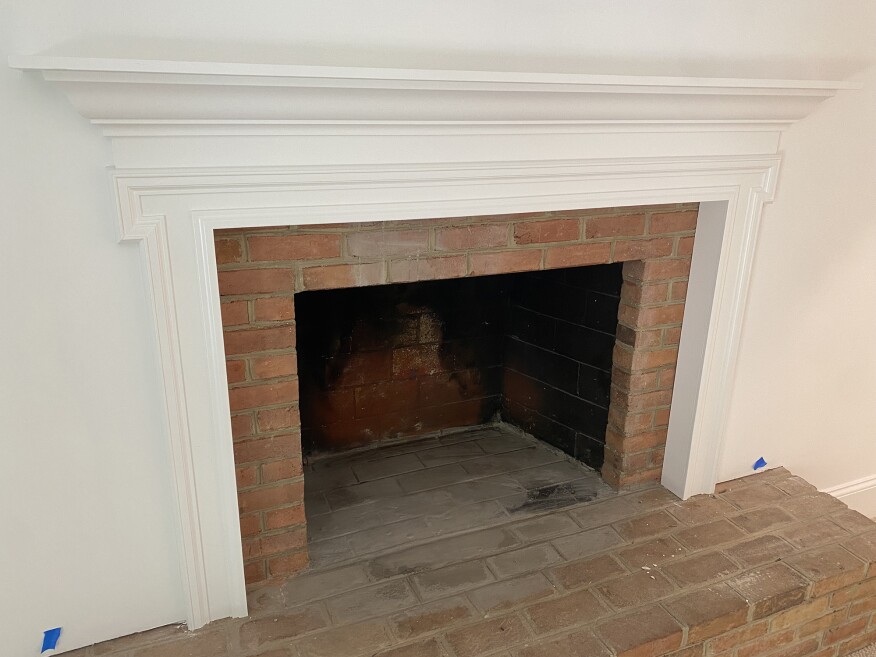{article.name}
Social Media Links
Fireplace Mantel Clearances
Posted by: Doug Horgan

- Share this:
- Share on Facebook
- Pin on Pinterest
- Tweet on Twitter
Q: I’m working on a remodeling project where the clients want to replace a modern-style fireplace mantel with a salvaged decorative one. However, the wood surround appears to be too close to the existing firebox opening at the sides and top. How close can a mantel surround be? Are the clearances different with manufactured fireplace inserts (in case their hearts are set on installing the decorative mantel)?
A: Doug Horgan, a vice president of best practices at BOWA, a design/build remodeling company in Northern Virginia, responds: In my experience, there are two standards to follow with regards to fireplace mantel and surround clearances: With traditional masonry fireplaces, follow the code book standards, and with manufactured fireplaces, follow the installation instructions.
Traditional masonry fireplaces. For standard masonry fireplaces, fireplace codes are in Chapter 10 of the International Residential Code (or local versions, such as the Virginia Residential Code, that are based on it). Section 1001.11 “Fireplace Clearance” of the IRC (2018 edition), Exception 4 states the following:
“Exposed combustible mantels or trim is permitted to be placed directly on the masonry fireplace front surrounding the fireplace opening providing such combustible materials are not placed within 6 inches (152mm) of a fireplace opening. Combustible material within 12 inches (306mm) of the fireplace opening shall not project more than 1/8 inch (3mm) for each 1-inch (25mm) distance from such an opening.”
I think of these clearances as three areas: From the firebox opening to 6 inches out, no combustibles are allowed; from 6 to 12 inches away, you can put thin wood (at 6 inches, only 3/4-inch-thick stock is allowed, gradually getting thicker to 1 1/2 inches at 12 inches away from the opening). Beyond 12 inches, combustibles of any depth are allowed. Clearances are the same at the top and the sides (see illustration, below).

No combustibles are allowed within 6 inches of the firebox.
Some mantels have legs that project out 2 inches or more from the wall. To meet code, those legs have to be at least 12 inches away from the firebox opening. On the fireplace shown in the photo below, only 8 inches of brick is showing on the sides and top, however, while the wood trim of the contemporary-style surround is about 4 inches thick. To meet code, the surround’s thickness would have to be 1 inch deep or less at 8 inches from the firebox (because we gain 1/8 inch per inch as we move from 6 to 12 inches from the firebox).

The modern-style mantel shown above does not meet code because the side trim projects roughly 4 inches out from the masonry facing within 8 inches of the firebox opening.
Manufactured fireplaces. With regards to manufactured fireplaces, mantels for metal fireplaces are installed per the fireplace directions (technically, the safety agency listing, which in practice is the same as the instructions). The mantel clearances are often more generous than the code, but not always. Recently, I was reviewing a product that allowed combustibles at a 50-degree angle past 6 inches. So traditional-looking projecting legs would probably work. But, this same fireplace said nothing projecting past 12 inches was allowed above the firebox, so that could trip us up.
There is simply no substitute for finding the directions and following them. It’s also worth checking if there are any unusual hearth requirements. I have seen some manufactured fireplaces recently that required fire-resistant materials, like four layers of cement board, under any tile or stone hearth. We would have to frame the floor system differently if we wanted the stone flush with the wood floor.
Another scenario we’re often presented with is having to finish around older manufactured fireplaces. Before installing lots of expensive trim around an old unit, it’s a good idea to have a professional evaluate its condition. Many fireplaces from more than 20 years ago are considered hazardous by today’s standards or have rusted out and so become hazardous. With older fireplace units, it’s possible to find the model number and search the internet for the installation instructions or contact the manufacturer. A fireplace professional may be able to help find the model number.
Photo: Doug Horgan; illustration: Tim Healey
Sign up for our Email List
Stay updated with all our latest posts, products and offers! Just enter your information below.

Comments